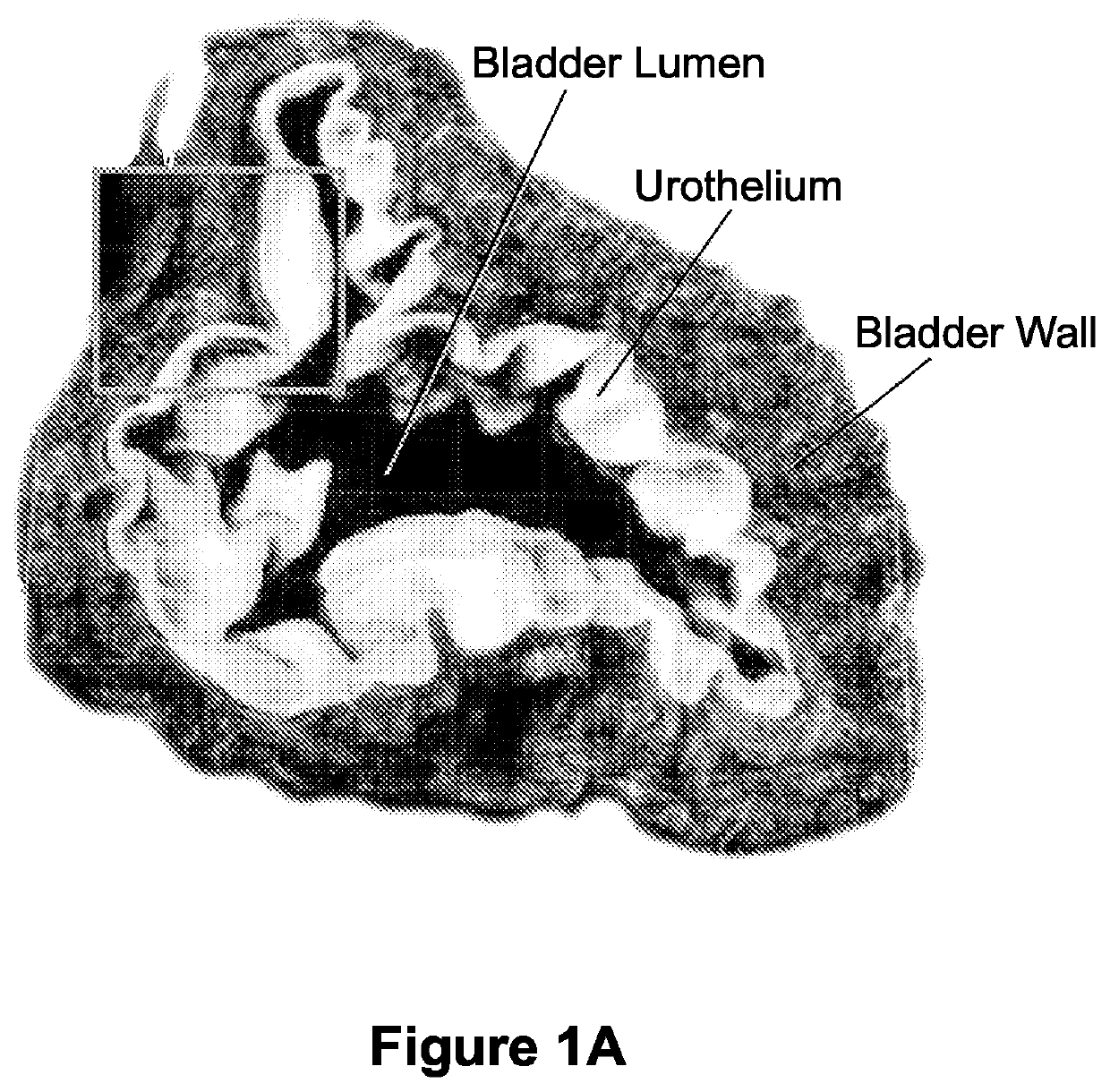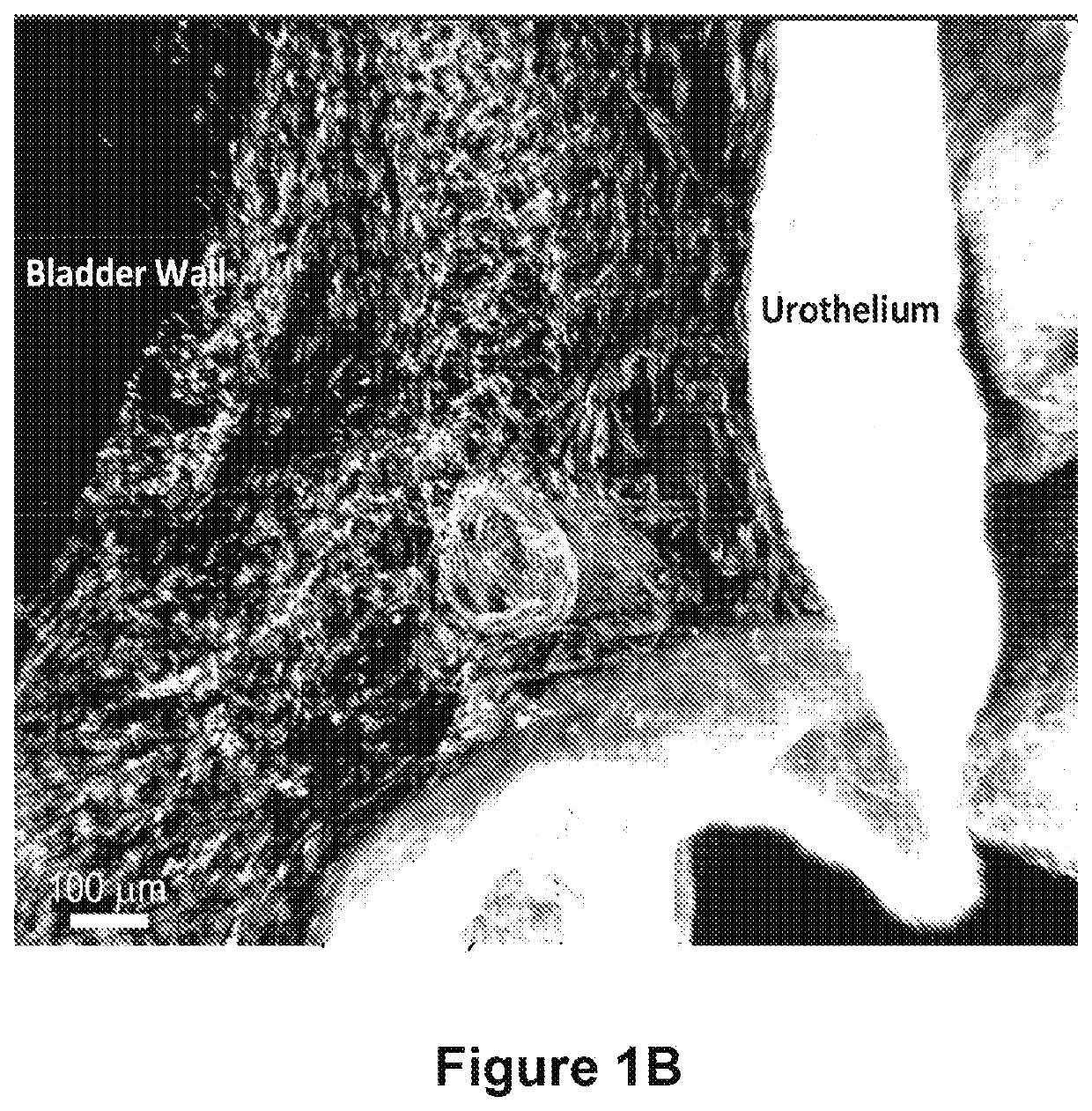Compositions and methods for clearing a biological sample
a biological sample and composition technology, applied in the field of compositions and methods for clearing biological samples, can solve the problems of affecting the quality of tissue preparation, etc., and achieve the effect of reducing the time required for tissue preparation alone and reducing the difficulty of using traditional immunohistochemical (ihc) techniques to achieve large-scale results. desirable effects
- Summary
- Abstract
- Description
- Claims
- Application Information
AI Technical Summary
Benefits of technology
Problems solved by technology
Method used
Image
Examples
example 1
This example discusses the tissue harvesting and embedding step of the protocol disclosed herein. First, an animal is euthanized according to approved protocol. Cervical dislocation is not performed as it will sever the vasculature to the brain.
Next, the animal is transcardially perfused with 20 mL of 1× ice-cold PBS followed by 20 mL of ice-cold gel / fixative solution. Perfusion can also be performed through the abdominal aorta if isolation of kidneys, liver, and spleen are desired. In addition, organs can be harvested first and then integrated with hydrogel.
A 2″ PVC pipe is capped at both ends and retrofitted with ¼″ diameter nozzles at opposite ends. The tube is supported vertically using a chemistry stand and clamp, with the inlet of the tube at the top and the outlet at the bottom. One quarter inch tubing is then connected to both ends of the tube fittings and lead to their desired components of the perfusion system. The water circulator outlet is connected with ...
example 2
This example discusses the tissue clearing and sample preparation for imaging steps of the protocol disclosed herein. First, the gel samples are removed from the tubes and any excess gel is teased away from around the tissue. Then the samples are placed into covered 50 mL conical tubes with 50 mL of wash buffer for two 24-hour periods at 37° C. on an end-over-end rocker. This is to help remove any excess PFA or acrylamide, as well as to help prime the sample for perfusion with the clearing buffer.
The samples are then placed into individual immunohistochemistry (IHC) tissue cassettes, labeled using pencil with what tissue it is. The perfusion chamber and water circulator is then prepared by connecting the hoses and filling the circulator with the clearing buffer.
“Lipid Magnet” Clearing Buffer
This formulation is for 10 liters of a solution.
Amount to addComponentfor 10 Liter batch 5% SDS500g0.5% Sodium Deoxycholate50g 1% Triton X-100100mL 1% Tween-20100mL0.1% SB3-1410g150 mM NaCl or...
PUM
| Property | Measurement | Unit |
|---|---|---|
| depth | aaaaa | aaaaa |
| depth | aaaaa | aaaaa |
| depth | aaaaa | aaaaa |
Abstract
Description
Claims
Application Information
 Login to View More
Login to View More - R&D
- Intellectual Property
- Life Sciences
- Materials
- Tech Scout
- Unparalleled Data Quality
- Higher Quality Content
- 60% Fewer Hallucinations
Browse by: Latest US Patents, China's latest patents, Technical Efficacy Thesaurus, Application Domain, Technology Topic, Popular Technical Reports.
© 2025 PatSnap. All rights reserved.Legal|Privacy policy|Modern Slavery Act Transparency Statement|Sitemap|About US| Contact US: help@patsnap.com



